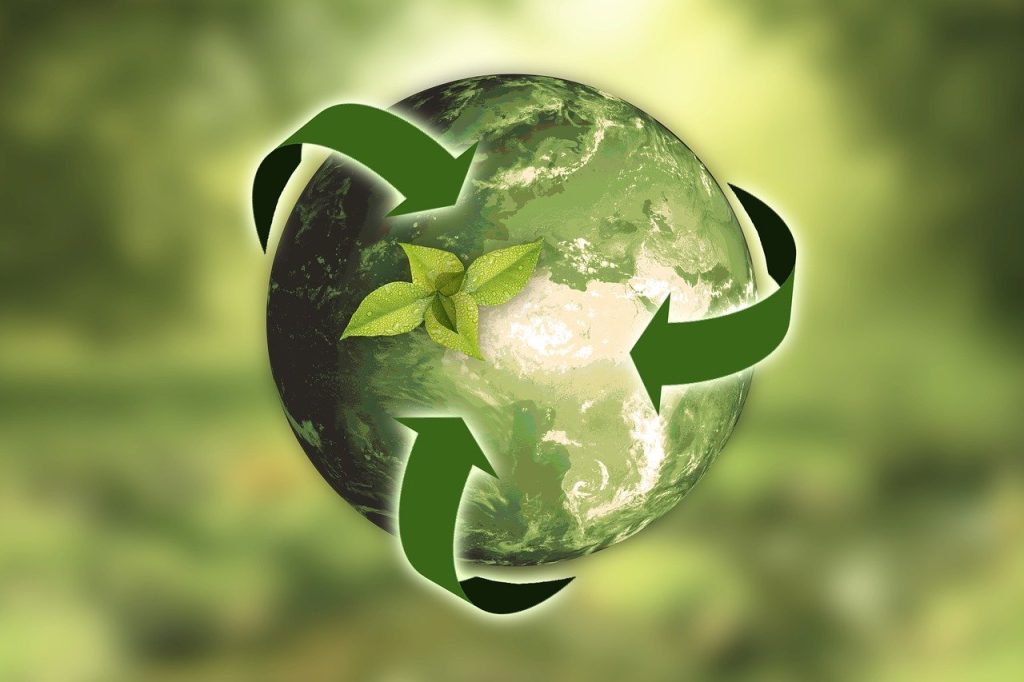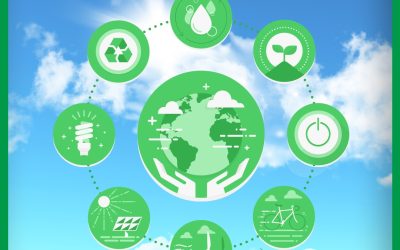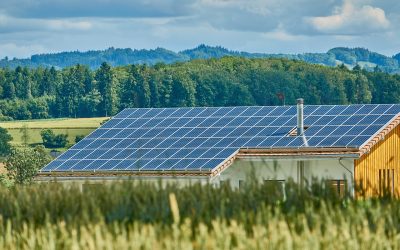Imagine a world where our everyday lives are greener, more sustainable, and in harmony with the environment. It may seem like a far-fetched idea, but the potential of green technology is not only within reach, but it is also being showcased in various industries across the globe. From renewable energy sources to eco-friendly transportation solutions, this article explores the groundbreaking innovations that are revolutionizing the way we interact with the planet. Get ready to be inspired by the incredible possibilities that lie ahead as we harness the power of green technology.
Benefits of Green Technology
Reducing carbon footprint
Green technology plays a crucial role in reducing our carbon footprint by minimizing the emissions of greenhouse gases into the atmosphere. By harnessing renewable energy sources and implementing energy-efficient practices, we can significantly decrease our reliance on fossil fuels, which are major contributors to carbon dioxide emissions. Green technology encourages the use of cleaner energy options, such as solar power, wind energy, and hydroelectric power, which have minimal carbon emissions compared to traditional energy sources.
Conserving natural resources
Another significant benefit of green technology is its ability to conserve natural resources. By employing sustainable practices, we can ensure that our natural resources are used wisely and efficiently. For instance, green building practices advocate for the use of energy-efficient insulation, passive solar design, and green roofs, which minimize energy consumption and help preserve our natural habitats. Additionally, water conservation technologies like rainwater harvesting and water-efficient fixtures enable us to conserve precious freshwater resources, reducing strain on natural water sources.
Creating sustainable infrastructure
Green technology is instrumental in fostering the creation of sustainable infrastructure. It provides us with the tools and knowledge to design and build eco-friendly structures that can support our needs without depleting our resources or damaging the environment. By adopting green building practices, we can construct energy-efficient buildings that consume less energy for heating, cooling, and lighting. This not only reduces our energy consumption but also lowers our reliance on non-renewable resources, ultimately leading to a more sustainable and environmentally-friendly future.
Renewable Energy Sources
Solar power
Solar power is a key renewable energy source that harnesses the energy of the sun to generate electricity. This technology involves the use of solar panels, which convert sunlight into usable energy, thereby reducing reliance on non-renewable sources such as coal or oil. Solar power offers numerous benefits, including reduced carbon emissions, lower electricity bills, and increased energy independence. Moreover, advancements in solar technology have made it more accessible, efficient, and affordable, making it a viable option for both residential and commercial applications.
Wind energy
Wind energy is another prominent renewable energy source that utilizes the power of wind to generate electricity. Wind turbines capture the kinetic energy of the wind and convert it into electrical energy. This clean and abundant source of power is environmentally friendly and does not produce harmful emissions or pollutants. Wind energy is a rapidly growing sector globally and has the potential to provide a significant portion of our energy needs, reducing our reliance on fossil fuels and mitigating the adverse effects of climate change.
Hydroelectric power
Hydroelectric power harnesses the energy of moving water, such as rivers or tides, to generate electricity. This renewable energy source has been used for centuries and continues to play a vital role in sustainable energy production. Hydroelectric power plants generate electricity by channeling the force of flowing water through turbines, which in turn drives generators. Not only does hydroelectric power contribute to a cleaner and greener energy system, but it also offers other benefits such as flood control, irrigation, and recreation opportunities.

Efficient Energy Management
Smart grid systems
Smart grid systems utilize advanced technologies and digital communication to enhance the efficiency and reliability of our electrical grid. These intelligent systems integrate renewable energy sources, energy storage, and demand response capabilities to optimize the distribution of electricity. Smart grids enable real-time monitoring and control of energy consumption, allowing for better energy management and reduced wastage. By enhancing grid efficiency and incorporating renewable energy resources, smart grid systems contribute to a more sustainable and resilient energy infrastructure.
Energy-efficient buildings
Energy-efficient buildings are designed to minimize energy consumption and maximize energy efficiency. These structures utilize various techniques such as efficient insulation, high-performance windows, LED lighting, and smart thermostats to significantly reduce energy needs. Energy-efficient buildings not only lower energy costs but also reduce greenhouse gas emissions, making them integral to sustainable development. Additionally, green building standards like LEED (Leadership in Energy and Environmental Design) provide a framework for designing and constructing environmentally responsible buildings.
Advanced energy storage
Advanced energy storage technologies play a crucial role in optimizing renewable energy utilization. These storage systems enable the capture and storage of excess energy produced by renewable sources during periods of low demand, which can be used later when demand is high. Energy storage solutions such as batteries, pumped hydroelectric storage, and compressed air energy storage contribute to grid stability, increase the integration of intermittent renewable energy sources, and enhance overall energy efficiency. By facilitating the effective utilization of renewable energy, advanced energy storage technologies support the transition to a low-carbon economy.
Green Transportation
Electric vehicles
Electric vehicles (EVs) offer a greener and more sustainable alternative to traditional gasoline-powered cars. EVs run on electricity stored in rechargeable batteries and produce zero tailpipe emissions, reducing both air pollution and carbon emissions. With advancements in battery technology, EVs have become more affordable, have longer driving ranges, and are now available in various models, including sedans, SUVs, and even trucks. With the development of an extensive charging infrastructure, electric vehicles have the potential to revolutionize the transportation sector and significantly reduce our dependence on fossil fuels.
Hybrid technologies
Hybrid technologies combine the use of an internal combustion engine with an electric motor to improve fuel efficiency and reduce emissions. Hybrid vehicles utilize regenerative braking, which converts kinetic energy into electrical energy to charge the battery, thus reducing fuel consumption. This technology allows for greater fuel efficiency while maintaining the convenience and range of a traditional gasoline-powered vehicle. Hybrid technologies provide a transitional solution towards fully electric vehicles and contribute to reducing the environmental impact of transportation.
Public transportation systems
Efficient public transportation systems are essential in reducing traffic congestion, decreasing fuel consumption, and improving air quality. Investing in green public transportation options such as electric buses, trams, and trains can significantly reduce carbon emissions from private vehicles. Additionally, the integration of smart technologies, like real-time tracking and intelligent scheduling, can optimize the efficiency of public transportation systems, reducing waiting times and enhancing overall user experience. Promoting and expanding sustainable public transportation networks plays a vital role in creating more eco-friendly and livable cities.

Waste Management Solutions
Recycling and composting
Recycling and composting are essential waste management solutions that reduce the amount of waste sent to landfills and promote the reuse of valuable resources. Recycling involves the collection and processing of materials like paper, plastic, glass, and metal, which are then transformed into new products. Composting, on the other hand, utilizes organic waste materials like food scraps and yard trimmings to create nutrient-rich compost that can be used as a natural fertilizer. By diverting waste from landfills and encouraging the circular economy, recycling and composting contribute to resource conservation and environmental sustainability.
Waste-to-energy conversion
Waste-to-energy (WTE) conversion is a sustainable solution that involves the conversion of waste materials into usable energy, such as electricity or heat. This technology uses various methods, including incineration, gasification, and anaerobic digestion, to extract energy from waste while minimizing its environmental impact. By diverting waste from landfills and generating clean energy, WTE conversion helps reduce greenhouse gas emissions and dependence on fossil fuels. It also provides an alternative to traditional waste disposal methods, contributing to a more circular and sustainable waste management system.
Biodegradable materials
The use of biodegradable materials offers a viable solution to reduce the environmental impact of waste. Biodegradable materials, such as bioplastics and bio-based packaging, are designed to break down naturally in the environment without leaving behind harmful residues. These materials can be derived from renewable sources such as plants or agricultural waste, reducing reliance on finite resources. By promoting the use of biodegradable materials in various industries, we can significantly reduce waste generation and contribute to a more sustainable and eco-friendly future.
Green Building Practices
Passive solar design
Passive solar design utilizes the natural heat and light from the sun to minimize the need for artificial heating, cooling, and lighting in buildings. This design approach takes into account factors such as building orientation, window placement, and thermal mass to maximize energy efficiency and occupant comfort. By optimizing the building’s interaction with the sun, passive solar design reduces energy consumption, lowers heating and cooling costs, and enhances indoor air quality. Incorporating passive solar design principles into building construction contributes to creating sustainable and environmentally-friendly structures.
Green roofs and walls
Green roofs and walls are innovative solutions that enhance energy efficiency, mitigate urban heat island effects, and promote biodiversity in urban areas. Green roofs involve the installation of vegetation and growing medium on the roof of a building, while green walls are vertical gardens attached to the exterior or interior walls of a structure. These green building practices provide insulation, reduce stormwater runoff, improve air quality, and create natural habitats for plants and animals. By integrating green roofs and walls into urban landscapes, we can improve the sustainability and livability of our cities.
Energy-efficient insulation
Energy-efficient insulation plays a crucial role in reducing energy consumption and improving building performance. Properly insulated buildings retain heat in winter and keep cool air inside during hot summer months, significantly reducing the need for heating and cooling systems. Energy-efficient insulation materials, such as spray foam, rigid foam, and cellulose insulation, offer superior thermal resistance, air sealing, and moisture control properties. By investing in quality insulation, we can create more comfortable living and working spaces while reducing energy demand and greenhouse gas emissions.

Water Conservation Technologies
Rainwater harvesting
Rainwater harvesting is a sustainable practice that involves the collection, storage, and use of rainwater for various purposes. This technique utilizes rooftops, gutters, and collection systems to capture rainwater, which can then be stored and used for irrigation, landscaping, and non-potable household uses. Rainwater harvesting reduces the strain on freshwater resources and helps mitigate water scarcity issues. It also provides a cost-effective and environmentally-friendly alternative to conventional water sources, promoting water conservation and sustainability.
Greywater recycling
Greywater recycling involves the treatment and reuse of wastewater generated from household activities such as showering, laundry, and dishwashing. This water, which is relatively clean and free from contaminants, can be recycled for irrigation, toilet flushing, and other non-potable uses. Greywater systems filter and treat the wastewater to remove impurities, making it safe for reuse. By implementing greywater recycling systems, we can reduce the demand for freshwater sources and alleviate pressure on wastewater treatment facilities, contributing to sustainable water management.
Water-efficient fixtures
Water-efficient fixtures, such as low-flow toilets, faucets, and showerheads, are designed to minimize water consumption without compromising performance. These fixtures utilize advanced technologies, including aerators and pressure regulators, to reduce water flow rates while maintaining sufficient water pressure. Water-efficient fixtures not only conserve water but also save energy by reducing the need for water heating. By promoting the use of such fixtures in residential, commercial, and industrial settings, we can achieve significant water savings and contribute to sustainable water conservation efforts.
Advances in Agricultural Practices
Organic farming techniques
Organic farming techniques prioritize environmentally-friendly practices that minimize the use of synthetic fertilizers, pesticides, and genetically modified organisms. Instead, organic farmers focus on natural solutions like crop rotation, composting, and biological pest control to promote soil health, biodiversity, and ecosystem balance. Organic farming methods maintain soil fertility, protect water quality, and reduce greenhouse gas emissions. By embracing organic farming practices, we can cultivate nutritious food, preserve biodiversity, and ensure the long-term sustainability of our agricultural systems.
Vertical farming
Vertical farming is a groundbreaking agricultural method that involves the cultivation of crops in vertically stacked layers or structures. This practice maximizes available space and utilizes artificial lighting and advanced hydroponic or aeroponic systems to provide optimal growing conditions for plants. Vertical farming offers several advantages, including higher crop yields, reduced water consumption, and year-round production regardless of climatic conditions. By optimizing land use and minimizing the need for pesticides or herbicides, vertical farming promotes sustainable food production and enhances food security.
Precision agriculture
Precision agriculture utilizes modern technologies like GPS, remote sensing, and data analytics to optimize the efficiency and sustainability of agricultural practices. This approach enables farmers to make precise decisions regarding planting, fertilizing, irrigating, and harvesting, tailored to the specific needs of each field or crop. By deploying sensors and collecting real-time data, precision agriculture enables the precise management of resources, reducing waste and environmental impact. By embracing precision agriculture, we can enhance agricultural productivity, conserve resources, and promote sustainable farming practices.
Smart Cities and Technology
Intelligent transportation systems
Intelligent transportation systems (ITS) leverage advanced technologies to enhance the efficiency and safety of transportation networks. These systems integrate real-time monitoring, data analytics, and communication technologies to optimize traffic flow, reduce congestion, and minimize emissions. ITS solutions include intelligent traffic control systems, smart parking, and real-time transportation information services. By implementing ITS, cities can improve mobility, reduce fuel consumption, and provide a more sustainable and convenient transportation experience for residents and visitors.
Smart utilities management
Smart utilities management refers to the use of technology-enabled solutions to optimize the generation, distribution, and consumption of energy, water, and other essential utilities. By utilizing sensors, data analytics, and automation, smart utilities enable real-time monitoring and control of resource usage, allowing for better efficiency, reduced wastage, and enhanced maintenance. These systems facilitate demand response programs, grid optimization, and the integration of renewable energy sources, ultimately contributing to more sustainable and resilient utility infrastructures.
Sensors and data analytics
Sensors and data analytics are transforming the way we manage and optimize our cities. By collecting real-time data on various parameters such as air quality, traffic patterns, energy consumption, and waste generation, sensors provide valuable insights into urban systems. Data analytics techniques, such as machine learning and artificial intelligence, process and analyze this data to derive actionable information for decision-makers. Sensors and data analytics enable evidence-based decision-making, resource optimization, predictive maintenance, and improved quality of life in smart and sustainable cities.
Government Policies and Initiatives
Renewable energy incentives
Government policies that incentivize the adoption of renewable energy play a crucial role in promoting green technology. Incentives such as tax credits, grants, and feed-in tariffs encourage individuals and businesses to invest in renewable energy sources, making them more economically viable. By reducing the financial barriers associated with renewable energy projects, these incentives contribute to the growth of the green energy sector and accelerate the transition to a low-carbon economy.
Emission reduction targets
Government initiatives that set emission reduction targets are essential in addressing climate change and promoting the adoption of green technology. By establishing specific goals and timelines for greenhouse gas emissions reduction, governments can drive policy and investment decisions towards cleaner and more sustainable practices. Emission reduction targets provide a framework for transitioning to renewable energy, improving energy efficiency, and adopting sustainable transportation solutions.
Green technology research grants
Government-funded research grants are instrumental in driving innovation and development in green technology. These grants support scientists, engineers, and entrepreneurs in conducting research, developing prototypes, and piloting new technologies that contribute to sustainability. By providing financial support and resources to innovative projects, research grants play a critical role in advancing green technology, creating jobs, and fostering economic growth in the renewable energy sector.
In conclusion, green technology showcases immense potential in addressing the pressing challenges of climate change, resource depletion, and environmental degradation. By reducing our carbon footprint, conserving natural resources, and creating sustainable infrastructure, green technology offers a pathway to a cleaner, greener, and more sustainable future. Through the adoption of renewable energy sources, efficient energy management, green transportation solutions, waste management practices, and sustainable building techniques, we can make significant strides towards a more sustainable and resilient planet. Government policies and initiatives, along with advancements in agricultural practices, smart cities, and technology, further amplify the impact and potential of green technology in driving positive change.All these efforts combined can truly make a difference and shape a better future for ourselves and generations to come.










